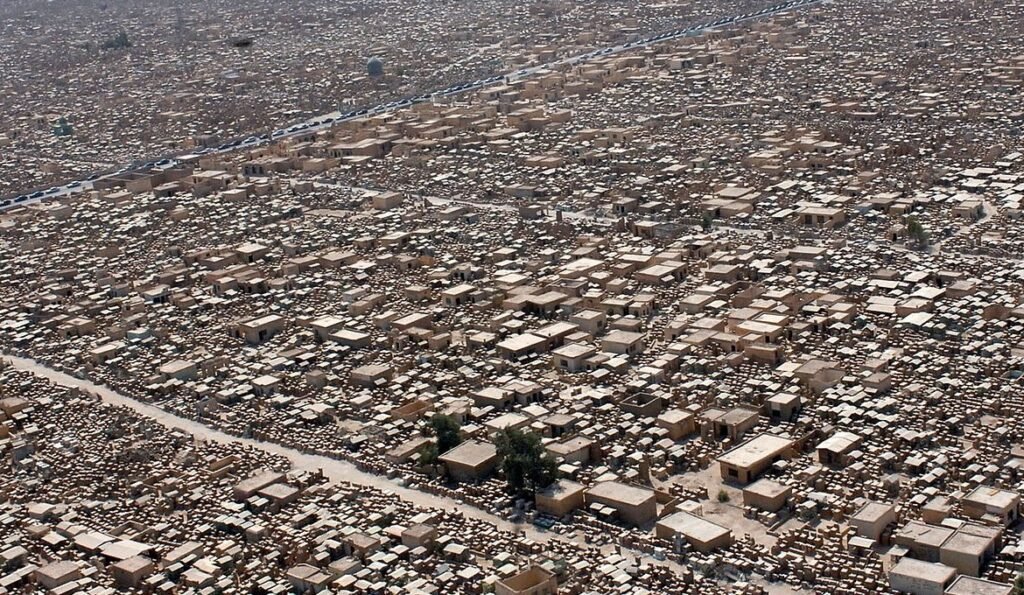Wadi al-Salaam: The Biggest Graveyard in This World:
Wadi Al-Salaam, an Islamic cemetery situated in Iraq, translates to ‘Valley of Peace’. Its population of nearly 600,000 inhabitants, located near the holy city of Najaf, pales in comparison to the number of deceased people buried there. The cemetery has been in operation for over 1,400 years, making it the world’s oldest and largest graveyard. In fact, it designated as a UNESCO heritage site.
To convey the magnitude of the cemetery, it covers 1485.5 acres and contains close to five million bodies, which is equivalent to the population of Scotland or the cities of Greater Manchester, Birmingham, Bristol, and Newcastle combined. It attracts millions of pilgrims annually, and according to the BBC, the majority of the graves belong to Shia Muslims. Recently, victims of the Islamic State war have also buried there.
Interestingly, being buried at Wadi Al-Salaam does not technically mean being buried in the ground. Instead, bodies are place inside the various catacombs, each of which can hold around 50 bodies (depending on size). The Marja, the highest level of Shia authority, which a title given to a Grand Ayatollah, decides who gets a burial plot. They have the power to make legal decisions based on Islamic law for followers and less-credentialed clerics.
Wadi Al-Salaam holds such significance because of the famous people buried there, including numerous kings, princes, and sultans, as well as Prophet Hud, Prophet Saleh, Ayatullah Sayyid Muhammad Baqir al-Sadr, and the remains of Ali Ibn Abi Talib, the prince of faithful. It believed that the souls of all faithful men and women will end up in Wadi Al-Salaam, regardless of where they buried.
The graves and tombs in the cemetery made of brick and plaster, and constructing them in the Middle Eastern heat is an impressive feat. Due to the heat, the ground level fluctuates, with some points being higher than others. A large portion of the cemetery is an underground network of burial vaults, and throughout the tombstones, there are room-sized crypts for the wealthy, with round domes on top displaying their prosperity in the afterlife. Different eras have their own distinct styles, such as the grave sites of the 1930s and 1940s, which reach ten feet high in an effort to distinguish one grave from another.
You may like our posts:
First Ever Robotic Surgery at Pakistan Kidney and Liver Institute
Controversial Journalist Tareq Fateh Died at 73
Last 8 Years Were the Warmest Ever on This Earth
Robbers Stole Gold RS.50 Million Worth From Jewelry Shop
80% Workers not Getting Minimum Wage of RS 25,000 Per Month in Pakistan


